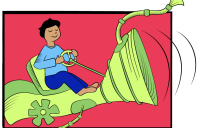A year after Zipcar came to Baltimore (MD), a survey shows changes in travel behavior among members of the car-sharing service: they drive less, use alternative modes of transportation more, and own fewer cars than they did before joining. According to the survey, the number of so-called Zipsters taking five or more car trips in a month decreased from 38% to 12%. Of particular interest, 11% of respondents use public transportation more (and more than a third use transit to access their Zipcars), 14% bike more, and 21% walk more. Eighteen percent of respondents sold their cars since joining Zipcar and 46% were able to avoid buying a vehicle. “Fewer cars on the streets means less competition for limited parking spaces. It means fewer vehicles in rush hour traffic. And it means less pollution in the air,” said Mayor Stephanie Rawlings-Blake in a statement. “But best of all, this program offers affordable and convenient transportation at a time when many people in the city are looking for cost-saving options.” Zipcar has 100 vehicles in Baltimore; no information was available about the number of members or the size of the survey sample.




Leave a Reply
You must be logged in to post a comment.